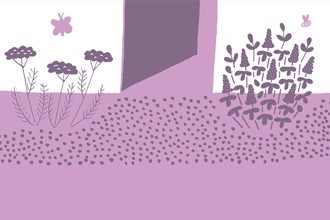
How to create a vertical garden
Gardeners have long been creating ‘green walls’ using wires or trellises to provide a framework for climbing plants. Climbing plants like clematis, honeysuckle, rose and jasmine can create an amazing scent for your garden and are loved by many creatures from butterflies to bees.
But ‘vertical garden’ can also mean plants living in pots fixed to the wall, hanging baskets, or on ladders or steps, giving depth to patios, driveways and small spaces.
Vertical pallet planters
A popular choice for vertical gardens is using upcycled wooden pallets! Be careful with edible planting – there are some health concerns regarding pesticide treatments of the wood, so take care when selecting your pallets. To be safe, if you’re planting directly into the pallets, use them for flowers instead. Otherwise you can use a leaning pallet to attach pots. Other popular choices for upcycled vertical gardens include shoe organisers and plastic bottles!
Things you will need
- A wooden pallet
- Sandpaper
- Screwdriver
- Wood screws
- Jubilee clips - of an appropriate length to go around your pots
- Terracotta pots
- Optional: paint, paintbrushes, stencils, varnish for sealing
Building your vertical pallet planter
- Make sure your pallet is clean and safe - sand down any sharp edges and check for protruding nails or splinters.
- If painting your pallet or pots, do it at this stage, but make sure to seal the wood with varnish and let everything dry before moving on.
- Screw a hole near the centre of each jubilee clip and screw these into the wood in whichever arrangement you’d like your pots to hang in – for example, in an alternate chequered pattern.
- Close the jubilee clips so that they hold the pots about halfway down their length.
- Insert plants of your choice, making sure to water and care for them as appropriate.
Green walls are great at:
- Deflecting water from buildings
- Providing an extra layer of insulation
- Keeping homes cool in summer
- Providing habitats for insects
- Contributing to improving air quality
- Contributing to reducing noise pollution
- Making the most of your space




